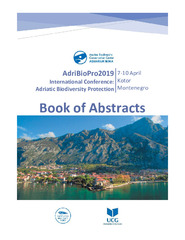Приказ основних података о документу
Bioassays in assessment of environmental pollution
| dc.creator | Kostić-Vuković, Jovana | |
| dc.creator | Kolarević, Stoimir | |
| dc.creator | Kračun-Kolarević, Margareta | |
| dc.creator | Sunjog, Karolina | |
| dc.creator | Višnjić Jeftić, Željka | |
| dc.creator | Gačić, Zoran | |
| dc.creator | Raskovic, Bozidar | |
| dc.creator | Poleksic, Vesna | |
| dc.creator | Lenhardt, Mirjana | |
| dc.creator | Vuković-Gačić, Branka | |
| dc.date.accessioned | 2023-02-09T10:55:49Z | |
| dc.date.available | 2023-02-09T10:55:49Z | |
| dc.date.issued | 2019 | |
| dc.identifier.isbn | 978-9940-9613-2-9 | |
| dc.identifier.uri | http://rimsi.imsi.bg.ac.rs/handle/123456789/1723 | |
| dc.description.abstract | Water pollution represents one of the main threats of global freshwater diversity. Untreated urban wastewaters are the source of both microbiological and chemical pollution. In exposed organisms, pollution affects different levels of biological organisation, from molecular to community level. Due to their role in aquatic ecosystems and vulnerability to pollution fish represent one of the key elements of ecosystem monitoring programs. Microbiological indicators of faecal pollution such as total coliforms, E. coli and enterococci are reliable indicators of the untreated urban wastewaters. They may be detected and quantified by fast and reliable enzymatic methods and most probable number (MPN) approach. Analysis of metals and metalloids concentrations in fish tissues indicate the exposure of fish to specific elements and can be used as a biomarker of accumulation. The single cell gel electrophoresis or comet assay is widely used in ecogenotoxicological studies for the assessment of the DNA damage as a biomarker of exposure to pollution. Histopathological alterations in fish tissues reveal changes at the middle level of biological organisation and are used as a biomarker of effect. Since each fish tissue responds differently to pollution it is recommended to perform these bioassays on multiple types of tissues, i.e.: blood, gills, liver, gonads, skin and muscle. Analysis of different biomarkers response can give information about the early response of biota to pollution, before the changes in population structure and a decrease of individuals occur. | sr |
| dc.language.iso | en | sr |
| dc.publisher | Institute of Marine Biology, University of Montenegro | sr |
| dc.relation | info:eu-repo/grantAgreement/MESTD/Basic Research (BR or ON)/173045/RS// | sr |
| dc.rights | openAccess | sr |
| dc.source | International Conference Adriatic Biodiversity Protection AdriBioPro2019 | sr |
| dc.subject | faecal indicator bacteria | sr |
| dc.subject | ICP-OES | sr |
| dc.subject | comet assay | sr |
| dc.subject | fish histopathology | sr |
| dc.title | Bioassays in assessment of environmental pollution | sr |
| dc.type | conferenceObject | sr |
| dc.rights.license | ARR | sr |
| dc.citation.spage | 115 | |
| dc.identifier.fulltext | http://rimsi.imsi.bg.ac.rs/bitstream/id/4339/Kostic-Vukovic-Adribiopro2019-izvod.pdf | |
| dc.identifier.rcub | https://hdl.handle.net/21.15107/rcub_rimsi_1723 | |
| dc.type.version | publishedVersion | sr |

